
|
U. S. CIVIL WAR
PHOTOGRAPHS
|

|
THOMAS J. "STONEWALL" JACKSON
PAGE THREE OF EIGHT
| |
MANASSAS
When the Civil War started, Jackson's strong military background justified
assigning him the rank of brigadier general. At the first major battle of the
Civil War near Manassas, Virginia, General Bernard E. Bee proclaimed, "There is
Jackson standing like a stone wall," and a legend as well as a nickname was born.
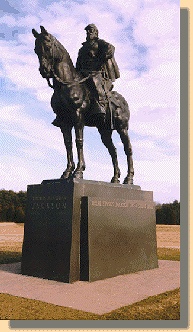
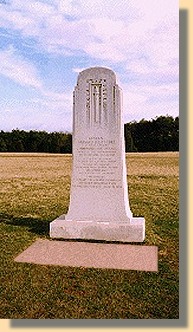
| |
The Stonewall Jackson (left) and General Bernard E.Bee (right) monuments
on the First Manassas Battlefield.
The Jackson Monument is placed approximately where Jackson was at the time
General Bee made his famous statement. The Bee Monument marks where General
Bee was killed.
|
|
Jackson's military feats elevated him to near mythical proportions, in both
North and South.
In the midst of one of his most brilliant maneuvers, he was mistakenly shot by
his own men on the night of May 2, 1863 at the battle of Chancellorsville.
The Confederate Army commander,
Robert E. Lee, decided that his indispensable and most capable subordinate
should recuperate in a safe place well behind friendly lines. He selected
Guinea Station, as the best location for Jackson because of its proximity
to the railroad to Richmond and its familiarity to the wounded general.
It was there that Jackson died on Sunday, May 10, 1863. commander,
Robert E. Lee, decided that his indispensable and most capable subordinate
should recuperate in a safe place well behind friendly lines. He selected
Guinea Station, as the best location for Jackson because of its proximity
to the railroad to Richmond and its familiarity to the wounded general.
It was there that Jackson died on Sunday, May 10, 1863.
(Text Source, in part: U.S. Gov't, National Park Service)
CHANCELLORSVILLE
See also the
Chancellorsville Section.
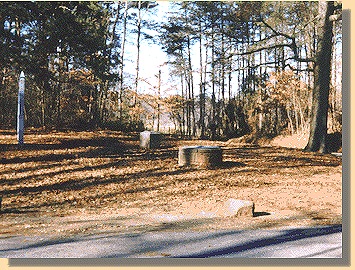 Upon starting his twelve mile march around General Hooker's Union army at
Chancellorsville, resulting in a flanking attack that gave the Confederates a
major victory and cost Jackson his life, Jackson had his last meeting with
Robert E. Lee at the spot shown in this 1998 photograph.
Upon starting his twelve mile march around General Hooker's Union army at
Chancellorsville, resulting in a flanking attack that gave the Confederates a
major victory and cost Jackson his life, Jackson had his last meeting with
Robert E. Lee at the spot shown in this 1998 photograph.
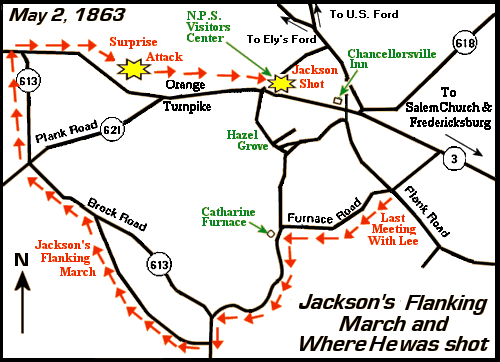 CHANCELLORSVILLE
CHANCELLORSVILLE
Chancellorsville - April 30-May 6, 1863
Estimated Casualties : 24,000 total
(US 14,000; CS 10,000) : 24,000 total
(US 14,000; CS 10,000)
On April 27, Maj. Gen. Joseph Hooker led the V, XI, and XII Corps on a campaign on a campaign to turn the Confederate left flank to turn the Confederate left flank by crossing the Rappahannock and
Rapidan Rivers above Fredericksburg. Passing the Rapidan via Germanna and
Ely's Fords, the Federals concentrated near Chancellorsville on April 30 and
May 1. The III Corps was ordered to join the army via United States Ford.
Sedgwick's VI Corps and Gibbon's division by crossing the Rappahannock and
Rapidan Rivers above Fredericksburg. Passing the Rapidan via Germanna and
Ely's Fords, the Federals concentrated near Chancellorsville on April 30 and
May 1. The III Corps was ordered to join the army via United States Ford.
Sedgwick's VI Corps and Gibbon's division remained to demonstrate against the
Confederates at Fredericksburg. In the meantime, Lee left a covering force
under Maj. Gen. Jubal Early in Fredericksburg and marched with the rest of the
army to confront the Federals. As Hooker's army moved toward Fredericksburg on
the Orange Turnpike, they encountered increasing Confederate resistance.
Hearing reports of overwhelming Confederate force, Hooker ordered his army to
suspend the advance and to concentrate again at Chancellorsville. Pressed
closely by Lee's advance, Hooker adopted a defensive posture, thus giving
Lee the initiative. On the morning of May 2, Lt. Gen. T.J. Jackson directed
his corps on a march against the Federal left flank, which was reported to be
“hanging in the air.” Fighting was sporadic on other portions of the field
throughout the day, as Jackson's column reached its jump-off point. At 5:20 pm,
Jackson's line surged forward in an overwhelming attack that crushed the Union
XI Corps. Federal troops rallied, resisted the advance, and counterattacked remained to demonstrate against the
Confederates at Fredericksburg. In the meantime, Lee left a covering force
under Maj. Gen. Jubal Early in Fredericksburg and marched with the rest of the
army to confront the Federals. As Hooker's army moved toward Fredericksburg on
the Orange Turnpike, they encountered increasing Confederate resistance.
Hearing reports of overwhelming Confederate force, Hooker ordered his army to
suspend the advance and to concentrate again at Chancellorsville. Pressed
closely by Lee's advance, Hooker adopted a defensive posture, thus giving
Lee the initiative. On the morning of May 2, Lt. Gen. T.J. Jackson directed
his corps on a march against the Federal left flank, which was reported to be
“hanging in the air.” Fighting was sporadic on other portions of the field
throughout the day, as Jackson's column reached its jump-off point. At 5:20 pm,
Jackson's line surged forward in an overwhelming attack that crushed the Union
XI Corps. Federal troops rallied, resisted the advance, and counterattacked . Disorganization on both sides and
darkness ended the fighting. While making a night reconnaissance, Jackson was
mortally wounded . Disorganization on both sides and
darkness ended the fighting. While making a night reconnaissance, Jackson was
mortally wounded by his own men
and carried from the field. J.E.B. Stuart took temporary command of Jackson's
Corps. On May 3, the Confederates attacked with both wings of the army and
massed their artillery by his own men
and carried from the field. J.E.B. Stuart took temporary command of Jackson's
Corps. On May 3, the Confederates attacked with both wings of the army and
massed their artillery at Hazel Grove.
This finally broke the Federal line at Chancellorsville. Hooker withdrew a mile
and entrenched in a defensive “U” with his back to the river at United States
Ford. Union generals Berry and Whipple and Confederate general Paxton were
killed; Stonewall Jackson was mortally wounded. On the night of May 5-6, after
Union reverses at Salem Church, Hooker recrossed to the north bank of the
Rappahannock. This battle was considered by many historians to be Lee's
greatest victory. at Hazel Grove.
This finally broke the Federal line at Chancellorsville. Hooker withdrew a mile
and entrenched in a defensive “U” with his back to the river at United States
Ford. Union generals Berry and Whipple and Confederate general Paxton were
killed; Stonewall Jackson was mortally wounded. On the night of May 5-6, after
Union reverses at Salem Church, Hooker recrossed to the north bank of the
Rappahannock. This battle was considered by many historians to be Lee's
greatest victory.
(Text Source: U.S. Gov't, National Park Service)
|
|
PAGE FOUR
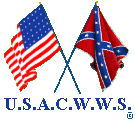 >
Civil War Photos
>
Stonewall Jackson
>
Page 2
>
3
>
4
>
5
>
6
>
7
>
8
>
Civil War Photos
>
Stonewall Jackson
>
Page 2
>
3
>
4
>
5
>
6
>
7
>
8
|
|



